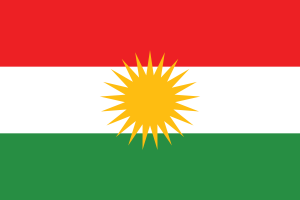Language/Central-kurdish/Grammar/Descriptive-Adjectives
Introduction
Descriptive adjectives are an essential part of any language, and in the Kurdish language, they play a vital role in describing objects, people, and situations. In this lesson, you will learn how to use descriptive adjectives in Central Kurdish. By the end of this lesson, you will be able to describe the world around you using Central Kurdish adjectives.
Take some time to dive into these other pages after completing this lesson: Comparative and Superlative & Common Prepositions.
Using Descriptive Adjectives in Central Kurdish
Descriptive adjectives are words that describe the properties of nouns. Central Kurdish adjectives come after the noun they describe, unlike in English, where adjectives come before the noun. Central Kurdish adjectives agree with the gender and number of the noun they describe.
For example, in English, we say "a big book," but in Central Kurdish, we say "kelek mezin." Here, "mezin" means big, and "kelek" means book. In Central Kurdish, the adjective comes after the noun.
Forming Descriptive Adjectives in Central Kurdish
In Central Kurdish, most adjectives can be formed by adding "-ek" to the end of a noun. For example:
- Sipî - white becomes sîpî-ek - white-ish
- Gul - rose becomes gulan - rose-colored
Note that for feminine words, an "-a" is added to the end of the adjective:
- Kef - keyf becomes kefa - enjoyable
- Ronî - knowledge becomes ronîya - knowledgeable
Some adjectives cannot be formed by adding "-ek" to the end of a noun. In this case, you must use a different adjective to describe the property:
- Biyanî - without becomes pêçan - void
Using Descriptive Adjectives in Context
Once you have formed an adjective, you can use it to describe nouns in Central Kurdish. Here are a few examples:
- Ceriba xweş - beautiful dress
- Gruyê sivik - green apple
- Bazirganî weş - antique market
Comparative and Superlative Adjectives in Central Kurdish
Comparative and superlative adjectives are used to compare the properties of different nouns. In Central Kurdish, these are formed by adding specific suffixes to the base adjective.
Comparative Adjectives
To form a comparative adjective in Central Kurdish, you add "-tar" to the end of the base adjective. For example:
- Girîn - big becomes girîn-tar - bigger
- Kêm - few becomes kêm-tar - fewer
Superlative Adjectives
To form a superlative adjective in Central Kurdish, you add "-terîn" to the end of the base adjective. For example:
- Girîn - big becomes girîn-terîn - biggest
- Kêm - few becomes kêm-terîn - fewest
Examples of Descriptive Adjectives in Central Kurdish
Here are some examples of descriptive adjectives in Central Kurdish:
| Central Kurdish | Pronunciation | English |
|---|---|---|
| filmî nû | feel-mee noo | new film |
| nîvî goranê | nee-vee gor-ah-nay | half tune |
| birçî sîpî | beer-chee see-pee | white bird |
| kilê sepî | kee-lay se-pee | dry sheepskin |
| spîdokî çirûsk | spee-doh-kee cheer-oosk | red spider |
Conclusion
In this lesson, you have learned how to use descriptive adjectives in Central Kurdish. You now know how to describe objects, people, and situations using Central Kurdish adjectives. Use this knowledge to build your vocabulary and make conversation in Kurdish more interesting and descriptive.

